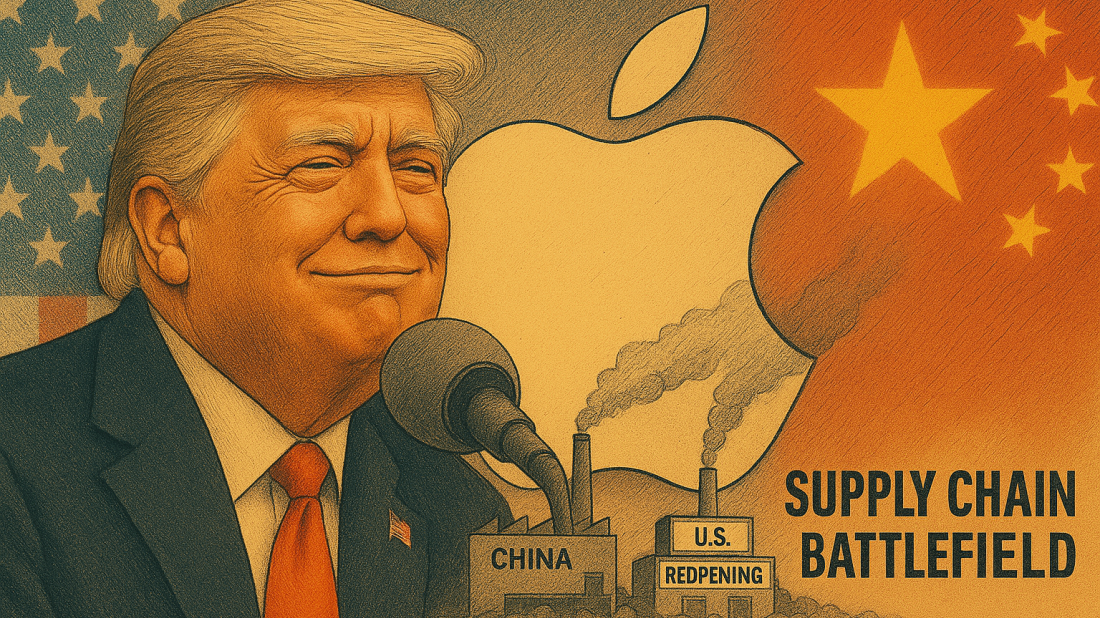Indigenous artifacts return to Canada after a century in Vatican collection
More than 60 Indigenous artifacts held in the Vatican for 100 years, including a rare Inuit kayak, arrived in Montreal, where First Nation, Métis and...

President Donald Trump is pressuring Apple to move iPhone manufacturing from China to the United States. But supply chain experts say the plan faces massive barriers built over decades.
The iPhone is assembled from around 2,700 parts, involving 187 suppliers across 28 countries.
Today, less than 5% of its components are made in America.
High-tech parts come mainly from Taiwan, South Korea, and Japan, while final assembly is centred in China.
Commerce Secretary Howard Lutnick said this month that “an army of human beings” would now build iPhones in America.
But analysts warn a U.S.-assembled iPhone could cost up to $3,500, far beyond current prices.
Apple's choice to remain anchored in Asia goes beyond cheap labour.
Experts say China offers speed, flexibility, and world-class scale unmatched by any U.S. alternative.
Final assembly is dominated by Foxconn, a Taiwanese firm with sprawling facilities in China.
Its Zhengzhou iPhone City alone cost $1.5 billion to build and employs 350,000 workers at peak.
Apple is gradually expanding production in India, aiming to diversify risk, but moving full operations to the U.S. would require rebuilding complex supplier ecosystems from scratch.
TechInsights estimates assembling an iPhone costs Apple just $10 per device today.
Ripping up supply chains would erase those efficiencies overnight.
Despite Trump's calls, Apple is seen as highly unlikely to move iPhone assembly to the U.S., according to analysts.
The entrenched networks across China and Southeast Asia are simply too vast, too specialised, and too embedded to replicate quickly.
Apple’s iPhone production remains a symbol of the global economy’s deep integration—one that tariffs and political pressure alone cannot undo.
The 2026 FIFA World Cup draw at the Kennedy Center in Washington, D.C., has finalized the group stage for the tournament co-hosted by the U.S., Canada, and Mexico, setting the schedule and matchups for next summer’s expanded 48-team event.
FIFA releases the 2026 World Cup schedule with match dates, venues, and key fixtures. See when host nations USA, Mexico, and Canada play and get an overview of group stage and knockout rounds.
Pakistan and Afghanistan exchanged heavy fire along their shared border late on Friday, a reminder of how sensitive the frontier remains despite ongoing diplomatic efforts.
Iran’s Foreign Ministry has strongly condemned the Gulf Cooperation Council (GCC) for its support of the claims by United Arab Emirates on three Iranian islands.
Chinese leader Xi Jinping accompanied French President Emmanuel Macron to Chengdu on Friday, a rare gesture seemingly reserved for the head of Europe's second-largest economy that highlights Beijing's focus on Paris in its ties with the European Union.
The International Robot Exhibition (IREX) opened in Tokyo on 3 December, bringing together visitors to explore robotics applications for industry, healthcare, logistics, and everyday life.
A bipartisan group of U.S. senators, including prominent Republican China hawk Tom Cotton, introduced the SAFE CHIPS Act on Thursday, aiming to prevent the Trump administration from easing restrictions on China’s access to advanced artificial intelligence (AI) chips for a period of 2.5 years.
A former Apple engineer has unveiled a new Chinese chip designed to compete directly with Apple’s Vision Pro headset.
Chinese AI startup DeepSeek has introduced its newest model, DeepSeek-V3.2-Speciale, claiming it can perform some tasks as well as the latest models from Google DeepMind and OpenAI.
A new robotic system developed for the Czech Police is reshaping how complex investigations are carried out, bringing laboratory-level precision directly to crime scenes.
You can download the AnewZ application from Play Store and the App Store.

What is your opinion on this topic?
Leave the first comment